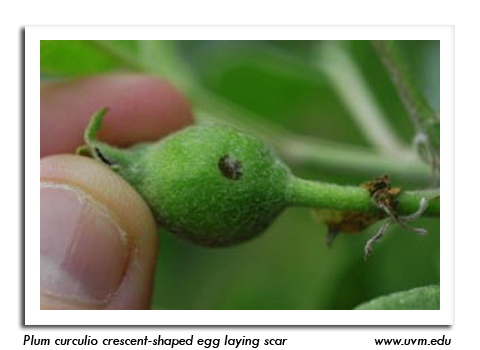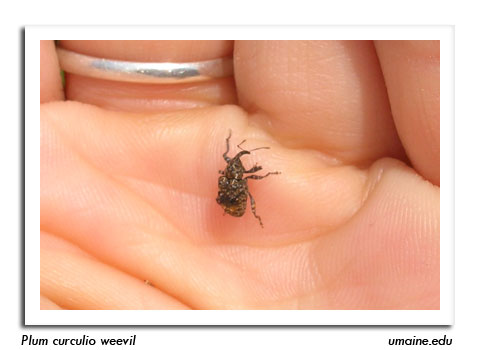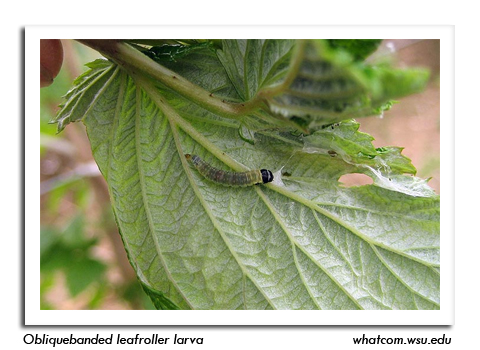
 |
|
|
Fruits
Volume 60 Number 5 Date 05/21/2015 CODLING MOTH - Eleven of 30 reporting apple orchards captured their first moths from May 15-18, before nighttime temperatures declined to the mid-20s and lower 30s and interrupted the spring flight. Since moths were not trapped on consecutive nights at most locations, the spring biofix was not established. In situations where the start of CM flight is disrupted, Orchard IPM Specialist John Aue recommends disregarding the earliest moths and waiting for the flight to resume to determine an accurate biofix. An exception to this scenario would be in orchards that registered very high counts of 10-20 moths last weekend, which could lead to a significant larval hatch. Pheromone traps should be checked a minimum of every other day over the next 1-2 weeks until biofix is set. PLUM CURCULIO - A report from Dane County confirms that the first feeding and oviposition scars are appearing on apples and plums. Inspection of fruits for oviposition scars should be under way in apple orchards beyond petal fall, while sampling for adults using a beating tray is the preferred method in orchards where tree development is less advanced. Female weevils show a strong preference for early-sizing apples and fruits beyond 10 mm will be most attractive. Organic control options include PyGanic (pyrethrin) applied at dusk to the outer rows and Surround WP (kaolin) on the interior trees. Both materials should be applied on a warm evening since most oviposition occurs at night. SPOTTED TENTIFORM LEAFMINER - Moth counts are expected to increase by early June as the second flight begins. Numbers this week were mostly low and ranged from 0-450 moths per trap, with an average of 88 per trap. This is the lowest weekly average since the first flight began to gain momentum in late April. The economic threshold for STLM increases from 0.1 to 1.0 mine per leaf for the second generation of sapfeeder larvae. PLANT BUG - Nymphs are appearing in alfalfa sweep net collections and fruit growers can anticipate more plant bugs migrating to apples, strawberries and other fruit as the harvest of first-crop alfalfa accelerates in the next two weeks. Strawberry plants beginning to bloom should be checked weekly for both adults and nymphs. Controls applied against the small, first and second instar stages are most effective and may eliminate the need for a second treatment. The economic threshold for this insect in strawberries is four per 20 sweeps. OBLIQUEBANDED LEAFROLLER - Late-instar larvae and rolled leaves were noted this week near Gays Mills in Crawford County, signaling that the first adults are likely to emerge before the end of the month. Most caterpillars in southern and central Wisconsin are in the intermediate to late larval stages at this time. -- Krista Hamilton, DATCP Entomologist 





|
|
|